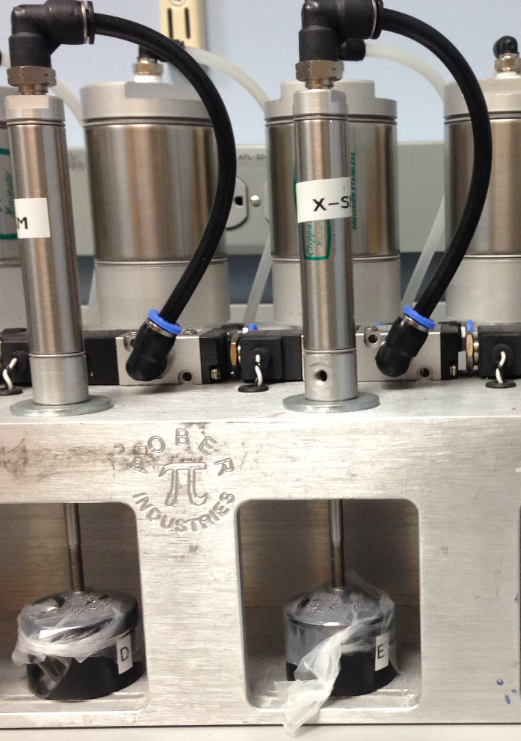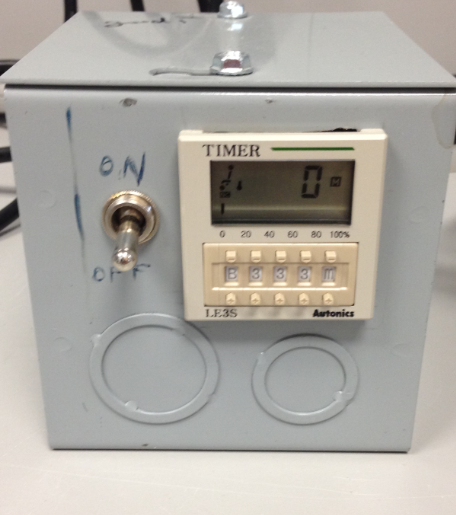Cyclic load fatigue machine
Specifications:

Name: Pneumatic Cyclic loading machine CF5M (Fatigue machine)
Manufacturer: Pober Industries Co., Waban, MA
Application: Pneumatically driven, 8 single unit medium (×7.86), 2 large five unit assembly (× 21.84), 2 medium five unit assembly (×7.86) and 2 X-small ( or small) five unit assembly (× 1.364 for x-sm and x 2.67 for sm).
Cyclic frequency: 1Hz (common setting)
Loading capacity: 40-2000N
Power Timer setting:
We normally set cycle time as 1 second. At this setting: 10k cycle -- 167 mins (2.7833 hrs) 50k cycle -- 833 mins (13.883 hrs)

Your result will show here.
Use "m" to set number by minute. It is different to M with substroke!
Calculate the pressure to setup experiments:
The load impact is driven by compressed air. The supplied pressure should be 110-120 psi. Use the corrrect regulator to adjust pressure for cyclic loading machine.
Your result will show here.
SOP of cyclic load fatigue
Potential harzard in operation
- Loud noice. >140dB -- using noise protection headset
- Moving parts.
- Compressed gas.
- Electric shock.
- Calculate the timer setting and pressure you need. Identify the load cell you should use.
- Check the compress air tubing connection to the proper unit set.
- Connect load cell unit to power timer. Only the main unit with timer can perform cyclic loading.
- Check the air pressue. The in house compressed air should be 120 psi.
- Turn on compressed air and adjust the pressre.
- Wear ear protector.
- Test about 20 cycles to make sure the pressure is stable and load cells are functional.
- Turn off power timer and unit power switch.
- Set the timer.
- Mount specimens in the proper fixtures.
- Align the fixtues with load cell. The 1/8" position pin at the base should fit the back hole of the fixture.
- Make the pusher rod have a good contact on the specimen. If there is gap, first impact may cause failure.
- Add water in the fixture containers if necessary.
- Turn on timer and power.
- Check the load cell function properly before leaving the lab.
- Shut off the door.
- After the desired time, remove the fixure and collect your specimens.
- Shut off compressed air. Turn off power switch.
- Clean the unit and bench.
- Fill logbook.